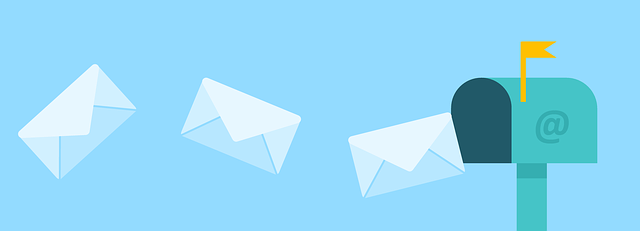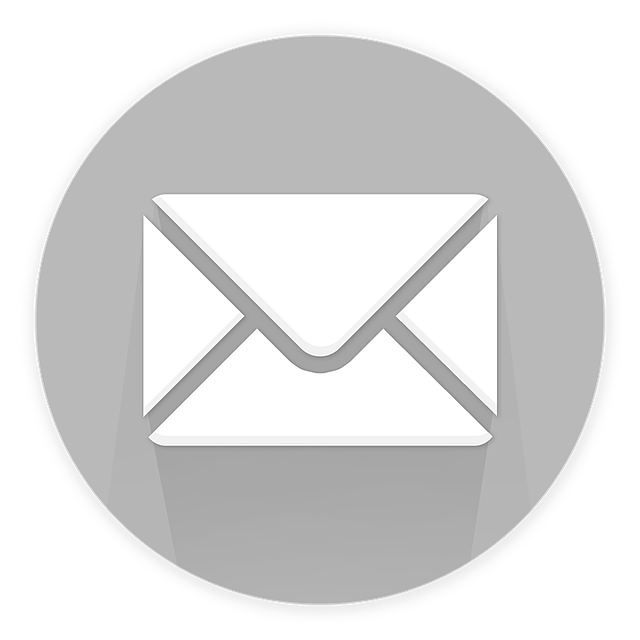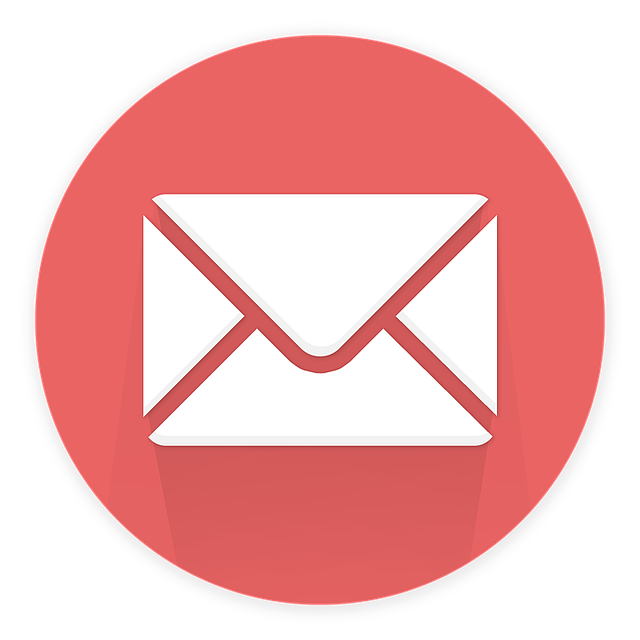Did you know that email marketing has an average ROI of $38 for every $1 spent? That’s an impressive 3,800% return on investment! If you’re a nonprofit organization looking to maximize your impact and reach, implementing effective email marketing strategies is essential.
In this comprehensive guide, we will walk you through the key steps to creating successful email campaigns that engage, inspire, and convert your audience.
First, we’ll show you how to build a strong email list, ensuring you’re reaching the right people who are genuinely interested in your cause.
Then, we’ll dive into the art of crafting compelling content that grabs attention and motivates action.
Next, we’ll explore strategies for optimizing your emails to increase conversions and drive results.
But that’s not all – we’ll also delve into automating email workflows, saving you time and effort while maintaining a personal touch.
Additionally, we’ll discuss the importance of tracking and analyzing metrics to measure your email marketing success.
Finally, we’ll address compliance and data protection, ensuring that your nonprofit stays in line with regulations and safeguards donor information.
Ready to take your nonprofit’s email marketing to the next level? Let’s get started!
Key Takeaways
- Email marketing has a high ROI for nonprofits, with an average of $38 for every $1 spent.
- Building a strong email list is crucial for nonprofits to connect with potential donors, volunteers, and supporters.
- Personalized and relevant emails that resonate with the audience are important for subscriber engagement.
- Optimizing emails for conversions through persuasive call-to-actions and testing can inspire action and increase open rates.
Building a Strong Email List
Now that you know the importance of reaching a wider audience, let’s dive into how you can start building a strong email list!
Email list growth is crucial for nonprofits as it allows you to connect with potential donors, volunteers, and supporters.
To begin, make it easy for visitors to subscribe by placing opt-in forms prominently on your website and social media platforms. Offer incentives such as exclusive content or discounts to encourage sign-ups.
Building subscriber engagement is equally important. Send personalized and relevant emails that resonate with your audience. Segment your list based on interests and preferences to deliver targeted messages. Encourage feedback, ask questions, and create interactive content to foster engagement.
Keep in mind that crafting compelling content goes hand in hand with building a strong email list.
Crafting Compelling Content
When crafting compelling content for your email marketing campaigns, it’s important to personalize your emails for maximum engagement. By addressing your subscribers by their names and tailoring the content to their specific interests, you can create a more personalized experience that resonates with your audience.
Additionally, incorporating storytelling techniques allows you to connect with your audience on a deeper level, evoking emotions and building a stronger connection.
Lastly, don’t underestimate the power of visuals and multimedia in enhancing your messages. Including eye-catching images, videos, and infographics can help grab attention and make your content more engaging and memorable.
Personalize your emails for maximum engagement
Craft emails that not only engage your audience but also make them feel valued and understood by personalizing the content to their specific needs and interests. Personalization techniques are essential for nonprofit organizations to connect with their supporters on a deeper level.
Start by segmenting your email list based on demographics, past interactions, and donation history. This will allow you to tailor your messages to each group’s preferences and motivations. Use dynamic content to insert personalized elements such as the recipient’s name, donation amount, or past involvement in your organization.
Additionally, consider sending targeted emails based on specific actions taken by your supporters, such as attending an event or signing a petition. By showing that you understand their individual interests and values, you can increase engagement and build stronger relationships.
Now, let’s explore how to use storytelling techniques to connect with your audience.
Use storytelling techniques to connect with your audience
Engage your audience by connecting with them through the power of storytelling. Creating emotional connections with your nonprofit’s supporters is crucial for building trust and fostering long-term relationships. By incorporating storytelling techniques into your email marketing strategy, you can captivate your audience and inspire them to take action.
Here are two ways to effectively use storytelling:
-
Share personal narratives: Use real-life stories of individuals who’ve benefited from your nonprofit’s work. Highlight their challenges, triumphs, and how your organization made a difference in their lives. This humanizes your cause and helps your audience connect on a deeper level.
-
Use visuals and descriptive language: Paint a vivid picture with your words. Describe the sights, sounds, and emotions associated with your cause. This helps your audience visualize the impact of their support and creates a lasting impression.
By incorporating storytelling into your emails, you can build trust, evoke emotions, and inspire action.
In the next section, we’ll explore how to incorporate visuals and multimedia to enhance your messages.
Incorporate visuals and multimedia to enhance your messages
Incorporating visuals and multimedia into your communication efforts can greatly enhance the impact of your messages and create a more engaging experience for your audience. Using visual storytelling allows you to connect with your supporters on a deeper level, evoking emotions and making your cause more relatable. Enhancing accessibility through multimedia ensures that your messages can reach a wider audience, including those with visual or hearing impairments. By incorporating images, videos, and audio clips, you can effectively convey your nonprofit’s mission and inspire action. Visuals and multimedia also help break up text-heavy emails, making them more visually appealing and easier to digest. To illustrate the power of incorporating visuals and multimedia, consider the following examples:
| 1. | Infographics | Visual representations of data or information that make complex concepts easier to understand. |
| 2. | Videos | Engaging storytelling through moving images and sound, bringing your cause to life. |
| 3. | Photos | Captivating images that evoke emotions and create a personal connection with your audience. |
By incorporating these elements into your email marketing strategies, you can captivate your audience and create a lasting impression. Now, let’s explore how to optimize your emails for conversions and maximize your nonprofit’s impact.
Optimizing for Conversions
To optimize your emails for conversions, make sure to use persuasive call-to-actions that encourage your readers to take action.
Test and optimize your email subject lines and preview texts to grab your readers’ attention and increase open rates.
Additionally, segment your email list based on demographics, interests, or past actions to deliver targeted messaging that resonates with your audience.
By implementing these strategies, you can enhance the effectiveness of your email marketing campaigns and drive more conversions for your nonprofit organization.
Use persuasive call-to-actions in your emails
Maximize the impact of your emails by using compelling call-to-actions that inspire your readers to take action and support your cause.
Creating urgency in your call-to-actions can be a powerful motivator for your readers. Use action-oriented language, such as ‘Donate now’ or ‘Take action today,’ to encourage immediate engagement.
Additionally, incorporating social proof can help build trust and credibility. Highlight success stories or testimonials from individuals who’ve benefited from your organization’s work. This will show your readers that their support can make a real difference.
As you craft your call-to-actions, remember to be empathetic and understanding. Connect with your readers on an emotional level by explaining how their contribution can positively impact the lives of those in need.
Next, we’ll discuss how to test and optimize your email subject lines and preview texts to further enhance your email marketing strategy.
Test and optimize your email subject lines and preview texts
Now that you understand the importance of using persuasive call-to-actions in your emails, it’s time to take your email marketing strategy to the next level by testing and optimizing your email subject lines and preview texts. A/B testing is a powerful tool that allows you to compare different versions of your email content to determine which one performs better. By experimenting with different subject lines and preview texts, you can discover what resonates most with your audience and increase your open rates. Additionally, email personalization is crucial in creating a personalized experience for your recipients. Incorporating their name or other relevant information in the subject line or preview text can grab their attention and make them more likely to open your email. By mastering these techniques, you’ll be able to create compelling emails that stand out in your subscribers’ crowded inboxes. Now, let’s move on to the next step: segmenting your email list for targeted messaging.
Segment your email list for targeted messaging
Segmenting your email list allows you to send personalized messages that resonate with specific groups of recipients. By dividing your subscriber base into different segments based on demographics, preferences, and behavior, you can create targeted messaging that is more engaging and relevant.
For example, you can send tailored content to donors, volunteers, or event attendees, increasing the likelihood of their continued support. Additionally, segmenting your list allows you to measure the effectiveness of your email campaigns more accurately. You can track open rates, click-through rates, and conversion rates for each segment, giving you valuable insights into what types of content and messaging are resonating with different groups.
This data-driven approach will help you refine your email marketing strategies and improve overall results. Transitioning into the next section, automating email workflows can further enhance your nonprofit’s email marketing efforts.
Automating Email Workflows
By implementing automated email workflows, you can streamline your communication process and kill two birds with one stone. Not only will you save time, but you’ll also be able to deliver personalized messages to your supporters.
Automating email responses allows you to set up pre-designed emails that are triggered by specific actions or events. For example, you can automatically send a thank-you email to new donors or a renewal reminder to expiring members. This not only saves you from manually sending these emails but also ensures that your supporters receive timely and relevant messages.
By measuring email campaign success through analytics, you can track open rates, click-through rates, and conversions. This data will provide valuable insights into the effectiveness of your email marketing efforts.
Transitioning into the next section about tracking and analyzing metrics, let’s explore how this data can help you optimize your email campaigns.
Tracking and Analyzing Metrics
Make data-driven decisions by tracking and analyzing metrics, allowing you to gain valuable insights and optimize your email campaigns for maximum effectiveness.
Email deliverability is a crucial metric to monitor as it determines whether your emails are reaching your recipients’ inboxes or getting stuck in spam folders. By regularly checking and improving your email deliverability, you can ensure that your messages are being seen by the intended audience.
Measuring campaign success is another important metric to consider. By tracking metrics such as open rates, click-through rates, and conversion rates, you can gauge the effectiveness of your email campaigns and make necessary adjustments to improve results.
Understanding these metrics will enable you to refine your strategies and engage with your audience more effectively.
Now, let’s delve into the next section about ensuring compliance and data protection.
Ensuring Compliance and Data Protection
When it comes to ensuring compliance and data protection in your email marketing strategies, it’s crucial to familiarize yourself with the laws and regulations surrounding this area.
By doing so, you can avoid any legal issues and maintain a positive reputation for your nonprofit organization.
Obtaining proper consent from your subscribers before sending marketing emails and consistently protecting their data in accordance with privacy policies are essential steps to build trust and maintain a strong relationship with your audience.
Familiarize yourself with email marketing laws and regulations
Mistakenly ignoring email marketing laws and regulations could potentially lead to catastrophic consequences for your nonprofit organization. To ensure compliance and protect your data, it’s crucial to familiarize yourself with email marketing laws and regulations. Here are four key considerations to keep in mind:
-
Email marketing ethics: Adhere to ethical standards, such as not sending unsolicited emails or misleading recipients with false claims.
-
Best practices for email deliverability: Follow guidelines to improve email deliverability, like maintaining a clean email list and avoiding spam trigger words.
-
Permission-based marketing: Obtain proper consent before sending marketing emails by using opt-in forms or confirmation emails.
-
Unsubscribe compliance: Make it easy for recipients to unsubscribe from your emails by providing a visible and functional unsubscribe link.
By understanding and abiding by these email marketing laws and regulations, you can build trust with your audience and avoid legal issues.
In the next section, we’ll discuss how to obtain proper consent for sending marketing emails.
Obtain proper consent for sending marketing emails
Ensure you have the necessary consent to send marketing emails and avoid potential legal issues by obtaining proper consent from your recipients. Obtaining explicit consent is crucial to comply with email marketing laws and regulations. By obtaining consent, you demonstrate respect for your recipients’ privacy and build trust with your audience. One way to obtain consent is by using consent management solutions that allow individuals to explicitly opt-in to receiving marketing emails. These solutions provide transparency and control, ensuring that recipients are fully aware of what they are consenting to and have the ability to revoke consent at any time. By using consent management solutions, you can confidently send marketing emails knowing that you have the explicit consent of your recipients. Next, we will discuss how to protect subscriber data and adhere to privacy policies while maintaining effective email marketing strategies.
Protect subscriber data and adhere to privacy policies
To safeguard subscriber data and honor privacy policies, it’s essential to prioritize the protection of personal information while implementing effective email marketing tactics. Here are five key steps to help you protect subscriber data and adhere to privacy policies:
-
Implement strong data encryption measures to ensure that sensitive information is securely transmitted and stored.
-
Regularly review and update your data retention policies to only retain personal information for as long as necessary.
-
Train your staff on best practices for handling and protecting subscriber data.
-
Conduct regular security audits to identify and address any vulnerabilities in your systems.
-
Be transparent with your subscribers about how their data is being used and give them control over their preferences.
By following these steps, you can demonstrate your commitment to data privacy and build trust with your subscribers.
Frequently Asked Questions
How can nonprofits effectively grow their email list without resorting to purchasing email addresses?
Are you tired of feeling like your email list is stuck in quicksand? Well, fear not, because we’ve got the ultimate email list growth strategies to help you skyrocket your numbers!
Building organic email lists is the key to success, and purchasing email addresses is a big no-no. Instead, focus on creating compelling opt-in forms, offering valuable content upgrades, and leveraging social media to drive traffic.
With these strategies, your email list will soar to new heights!
What are some creative ways to make nonprofit email content stand out and engage recipients?
To make your nonprofit email content stand out and engage recipients, try innovative personalization techniques. Address recipients by their first name and tailor the content based on their interests and past interactions.
Additionally, storytelling through visuals can captivate your audience. Use compelling images, videos, and infographics to convey your message effectively.
By incorporating these strategies, you can create emails that resonate with your recipients, grab their attention, and inspire them to take action.
Are there any specific design tips or best practices for optimizing email campaigns to increase conversions?
Design tips and conversion optimization go hand in hand when it comes to boosting the success of your email campaigns.
Think of your email design as a beautiful garden; it should be visually pleasing, engaging, and easy to navigate. Use eye-catching colors, clear and concise messaging, and compelling visuals.
Don’t forget to optimize for mobile devices, as more and more people are checking their emails on the go.
By implementing these design tips, you’ll create emails that not only look great but also drive conversions.
How can nonprofits leverage automation to improve the efficiency and effectiveness of their email workflows?
To improve the efficiency and effectiveness of your email workflows, you can leverage personalization and integrate social media.
Personalization allows you to tailor your emails to each recipient, increasing engagement and conversions. Use automation to send targeted messages based on donor behavior or interests.
Integrating social media helps expand your reach and encourages supporters to share your content.
By leveraging these strategies, you’ll streamline your email workflows and maximize the impact of your nonprofit’s communication efforts.
What are the key metrics that nonprofits should focus on tracking and analyzing in order to measure the success of their email marketing campaigns?
To evaluate the success of your email marketing campaigns, it’s crucial to track key metrics that provide valuable insights.
One interesting statistic is the average open rate for nonprofit emails, which is around 25%.
When measuring success, focus on key metrics like click-through rates, conversion rates, and unsubscribe rates. These metrics will help you gauge engagement, identify areas for improvement, and tailor your campaigns to resonate with your audience.
By tracking these metrics, you can optimize your email marketing strategies and drive meaningful results for your nonprofit organization.
Conclusion
Congratulations! You’ve just completed your comprehensive guide to email marketing strategies for nonprofits. By implementing the tips and techniques shared in this guide, you’ll be well on your way to building a strong email list, crafting compelling content, optimizing for conversions, automating workflows, and tracking valuable metrics.
But remember, success doesn’t happen overnight. It takes time and effort to see the results you desire. So stay committed, stay focused, and get ready to witness the power of email marketing in transforming your nonprofit organization. Exciting times lie ahead!










